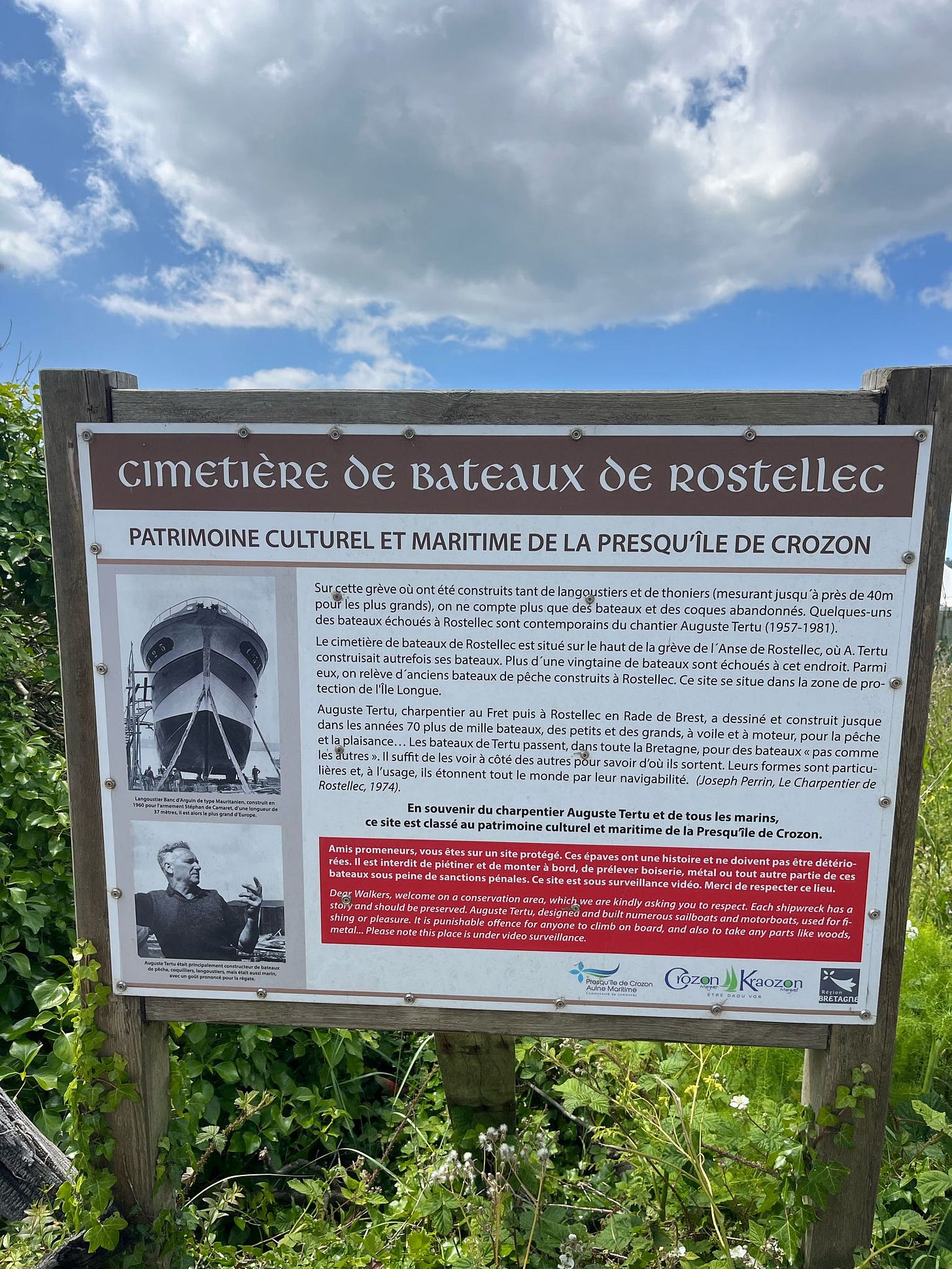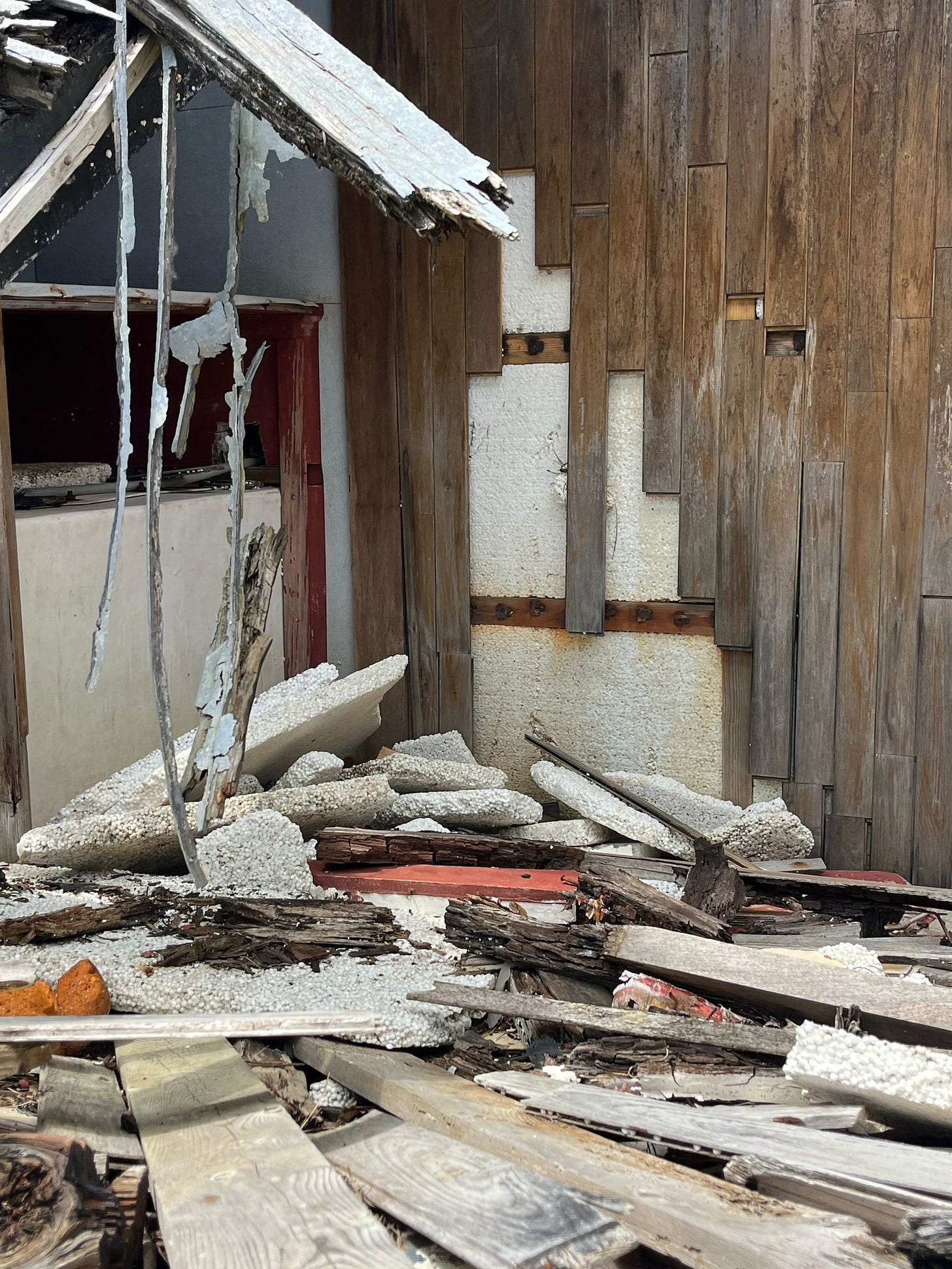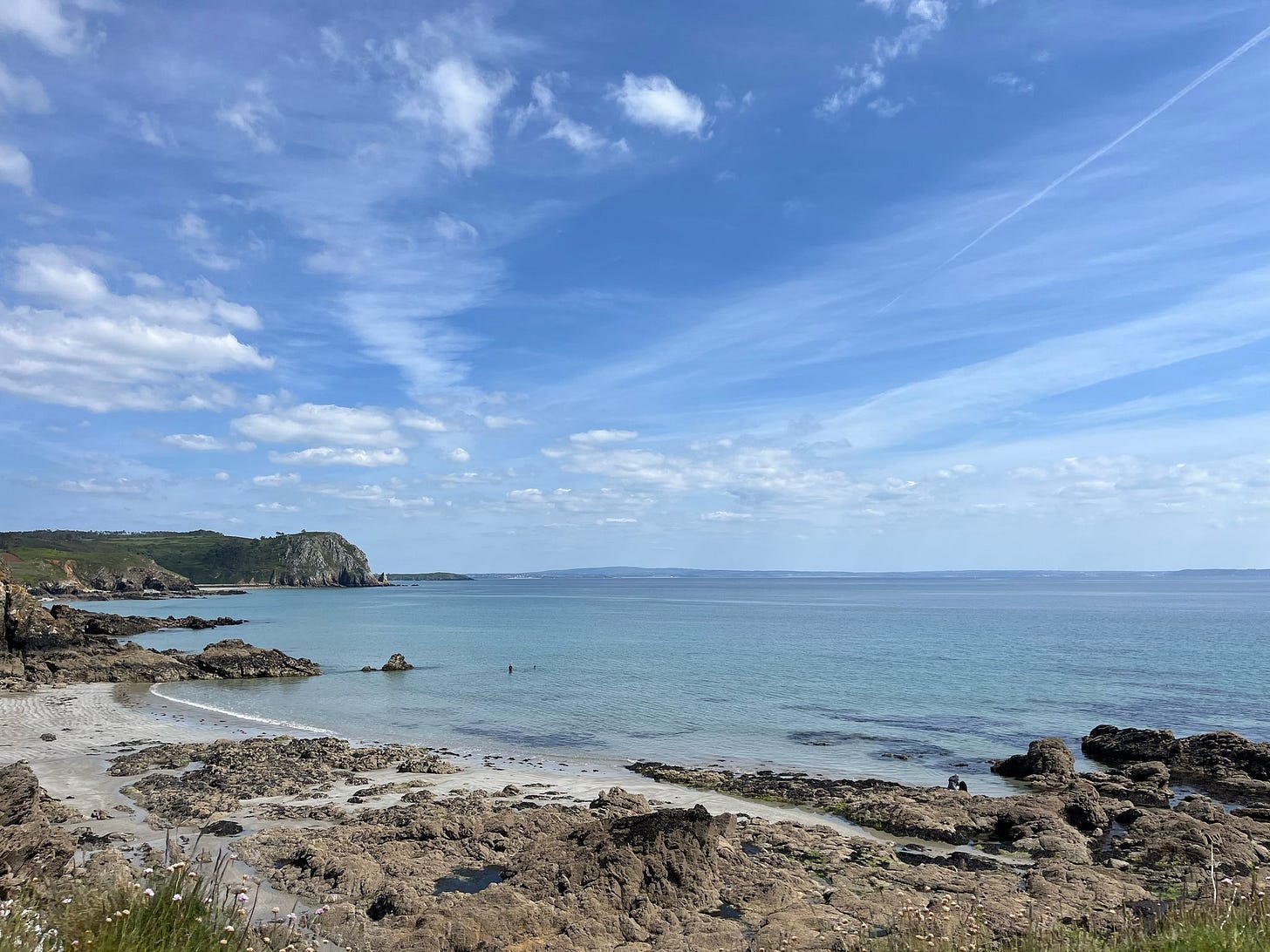Boat Cemeteries as Conservation or Pollution Sites?
Boat wrecks leach a cocktail of pollutants into aquatic ecosystems. Should we really be preserving them?
Hi folks,
I’ll cut to the chase today. Whilst out touring mum and dad (visiting from Australia), I couldn’t help but notice a ‘boat cemetery’ marked on Google maps, so we took a 25minute detour and discovered an actual wreck conservation site. Yep, boats deliberately left to rot in a delicate tidal ecosystem in order to preserve their stories.
Two swans greeted us as we parked adjacent to the calm bay. Walking towards the boats, mussel shells cracked under our feet. Huge oyster shells lay discarded on the shore. In front of us, a cluster of ‘dead boats’, some lay partially in the water, others slightly higher up on the shore, and others higher still in the dunes, almost touching the road, adjacent local housing.
Google maps labels the site as a ‘Maritime museum in Crozon’, with an average rating of 4.2 stars (out of 5). Comments are thus overly positive: “Beautiful and kind of surreal place with many good motifs for photographers. In every case worth a visit.”
Further digital probing dug up this official cultural record:
Contributor: The Inventory of Cultural Heritage in Brittany
The boat cemetery of Rostellec is actually divided into two parts. The first is located on the upper shore of the Anse de Rostellec, where A. Tertu once built his boats. More than twenty boats are stranded at this location. Among them are former fishing boats built in Rostellec. The second site is further west, toward the slipway, and includes the Averse and the Ondée, two water tanker boats that were used to supply the islands of the Iroise Sea (Molène, Sein) and Île Longue during the 1980s. Both boats have ended their days in the Anse de Rostellec, without any of the rehabilitation projects coming to fruition.
On this shoreline, where so many lobster boats (langoustiers) and tuna boats (thoniers)—some measuring nearly 20 meters for the largest—were once built, now only abandoned boats and hulls remain. Some of the boats stranded in Rostellec date from the time of the Auguste Tertu shipyard (1957–1981), while others arrived later, like the two water barges Averse and Ondée. Moreover, Auguste Tertu’s son, Pierre, bought many boats in the 1980s with the intention of restoring them. However, not all restorations were undertaken due to the Mellick Plan, which encouraged the destruction of the fleet in the early 1990s.
Locality: Rostellec
Environment: Isolated
Location: Brittany
Authors of the record: Clotilde Buhot; Julien Amghar
Careful not to touch any of the boats, and without my handheld microscope (you can BET I will be back there soon with the scope!), I documented the site as it stands today with my smartphone. The below photos and videos gives you a closer look. Pay attention to flaking paint shedding microplastics into the sea, styrofoam on the deck of one of the site’s main boats, and the reality that these ‘cultural’ boat cemeteries attract the dumping of modern wrecks, including fiberglass vessels.
On the subject of boat paints, micro plastics, and the threat to marine environments, I’ll back these photos up with a scientific paper HERE. I was shocked to find styrofoam on the deck of this same wreck. The photos suggest that the styrofoam was used as some kind of insulation for the cabin and not removed from the wreck.
Here, it seems to be the case that the environmental impact of ‘conserving’ shipwrecks has been overlooked. There are many such sites in here in Brittany. What also seems to be ignored is how these sites attract the dumping of more modern wrecks, a fact on display for us as we walked around the cluster of bad boats.
Taking it all in, knowing that scientists have discovered the impact of shedding fiberglass and resin from end-of-life boats, I wondered how we can change baseline thinking that finds the beauty in these ghost boats and boat cemeteries?
The Floating Stories Lab association is leading a citizen science initiative Regenerative Tides: Sailing for Solutions — ReTISS — kicks off in mid-June with support from the European Union. We will be engaging coastal communities here in Brittany in mapping, monitoring, and addressing the environmental impacts of abandoned fiberglass boats through data collection, advocacy, and storytelling.
If you would like to be involved — locally or from a distance — please get in touch and express your interest via our online form.
You can also support our work by becoming a PAID subscriber.
I hope to see many of you out in the field. If you’d like to initiate a similar project in your local community, do get in touch to learn how the Floating Stories Lab can help with training and support.
I’ll leave you with a photo of another beach in the Crozon region where bad boats are NOT littering the shore.
Thanks for being here!
Angie
(Co-founder and President — Floating Stories Lab Association)










